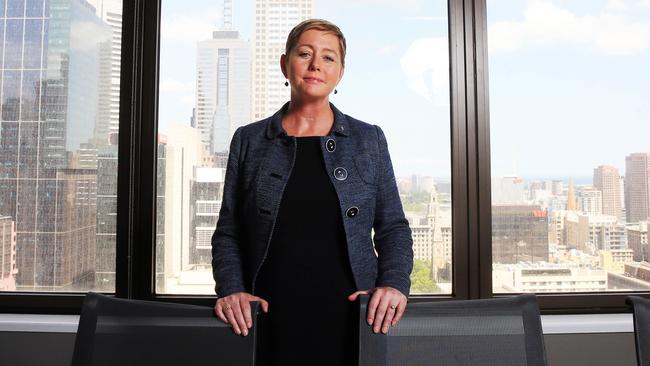ASX 200 set to hit historic target of 40 per cent women directors
Australia’s top 200 companies are only 30 women short of reaching a historic target in the fight to appoint more female directors.

Thirty women are all that is needed for Australia’s top companies to make gender equity history, according to the superannuation funds that directly target male directors to force board change.
The Australian Council of Superannuation Investors says adding 30 more women directors to the ASX 200 will push the companies to 40 per cent female membership, a goal that could be reached by the end of the year.
ACSI targets companies with less than 30 per cent of women on their boards, advising members to protest by voting against sitting male directors up for re-election on the grounds they have not done enough to appoint women.
ACSI represents 26 Australian and international asset owners and institutional investors with total assets of more than $1 trillion, which translates to significant leverage against top companies.
ACSI CEO Louise Davidson said the percentage of female directors had doubled in less than a decade: “Directors typically don’t enjoy having a significant vote against them. Ten years ago, when we started this campaign, I sat down to write to every company in the ASX 200 with zero or one woman on the board. I was shocked to find I had to sign 100 letters. Now, you can count that number on your hands.”
While all ASX 200 companies now have at least one woman on their board, there are 13 companies with only one and Ms Davidson said there were “still a pretty decent number of boards that don’t have 30 per cent”.
The overall statistic of 38.15 per cent hid “some poor performance in pockets”, she said.
While the top 200 countries are almost at 40 per cent, it’s a different story in the ASX 300, where six companies still have male-only boards and 24 have less than 30 per cent female directors.
There are more women on boards of the top companies: the ASX 20 boards are at 44.85 per cent, the ASX 50 is at 43.52 per cent, the ASX 100 has 40.3 per cent, the ASX 200 is at 38.15 per cent and the ASX 300 is at 37.57 per cent.
Ms Davidson said the voting advice to investors came after significant conversations with companies about gender diversity, and she made no apology for taking direct action.
“We spent a long time talking and encouraging and we got to a point where we felt that just talking wasn’t really providing as much focus as was required,” she said. “My sense is there’s quite a strong support amongst our membership for the gender diversity work, and that would be reflected in the voting.
“We’ve had many years of concerns about pipelines or not appointing on merit, but there is clearly a pool of really talented women, and by failing to focus on trying to get diversity on boards we think boards risk missing out on some fantastic talent.”
Leading board director and chair Patricia Cross supports the ACSI tactic of targeting laggard boards. She has served on boards including NAB, Qantas, Wesfarmers, AMP, Suncorp-Metway and Transurban, along with the Future Fund.
“I believe very strongly sustainable companies outperform others and governance is super-important,” she said.
“I think (ACSI) is assisting their investors to perform better by investing in companies that are more sustainable.
“Unlike when all this started, I think you’ll find people are very comfortable with it now, and they enjoy the diversity. The other thing that directors enjoy is having the type of contribution that gets brought in when everyone’s not thinking the same way.”
A decade ago, Ms Cross set up The 30% Club in Australia to push for 30 per cent female directors, a target which has now risen to 40 per cent. In 1996, female representation was about 5 per cent.






To join the conversation, please log in. Don't have an account? Register
Join the conversation, you are commenting as Logout